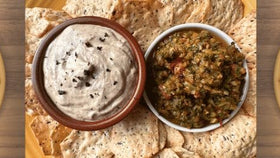How is White Pepper Used in Cooking
Though they are derived from the same berries, white pepper often takes the global backstage to black pepper. In some parts of the world though, white pepper is the more common of the two. We get it, but there is a time and place for both. To help more folks understand when white pepper should be employed in cooking, we will be focusing this article on the less common peppercorn.
White peppercorns boast a unique flavor composition, which can be attributed to the harvest timing and processing methods. White pepper is derived from fully ripe, green peppercorns that undergo additional processing, resulting in a gray, white color and a milder flavor. Let's explore the practical ways in which white pepper can be used in the kitchen.
A Culinary Guide to Using White Pepper
White Pepper is Used to Flavor of Savory Dishes
White pepper is most commonly used to add complexity to savory dishes. Its slight heat and vibrant, yet earthy flavor positions it as an excellent choice for seasoning a plethora of dishes when one desires a peppery taste, but also subtle grass-like, almost floral notes to balance other flavors in the dish. For aesthetic reasons, white pepper is also preferred by many chefs for light-colored soups, stews, and sauces, as well as potatoes, pasta, and rice dishes because they want to avoid incorporating black specks into such dishes. This is especially true for many cream-based dishes such as gratin, alfredo, risotto, and more. The subtle warmth beautifully complements such dishes, whereas the earthiness adds a refreshing element to heavier fare.
White Pepper's Role in Asian Cuisine
In Asian cooking, particularly in Chinese and Southeast Asian cuisines, white pepper plays a crucial role in both flavoring food during the cooking process, as well as finishing dishes. Its aromatic qualities and mild heat make it a key ingredient in many marinades, stir-fries, and noodle dishes. The spice complements the vibrant flavors of Asian ingredients like ginger, garlic, and soy sauce, contributing to the distinctive taste of many regional specialties.
White Pepper in Baked Goods and Desserts
White pepper need not be reserved for savory dishes alone. Though it may come as a surprise, pepper complements many desserts and baked goods quite well. A hint of white pepper in fruit tarts, cookies, chocolates or custard-based recipes adds a subtle warmth and complexity. The spice's delicate notes enhance the sweetness and helps balance both sugars and acidic elements without overpowering such delights.
Pickling with White Pepper
White pepper is often found in pickling brines. Its distinctive flavor perfectly complements the tanginess and acidity of the vinegars in pickling brines. The peppery heat easily infuses into vegetables like cucumbers, onions, carrots, garlic, and brassicas. Meanwhile the earthy and floral notes help to marry many of the other common ingredients found in pickling spice blends.










Slofoodgroup
Autor